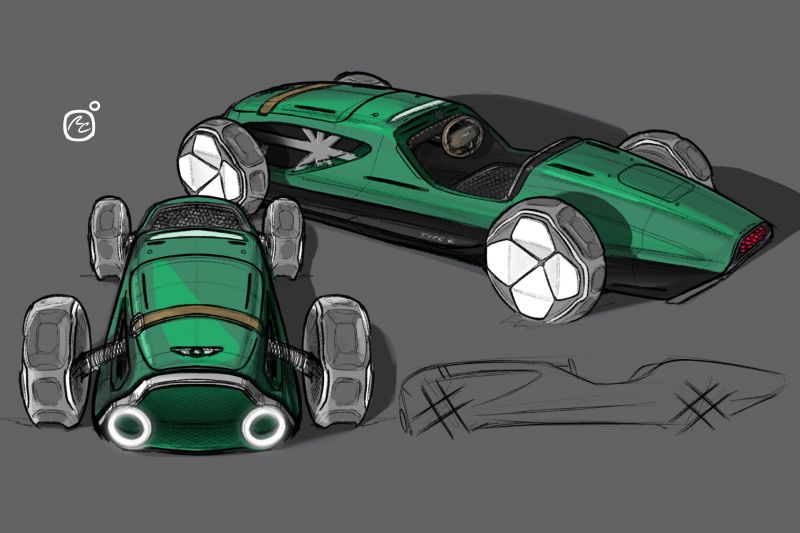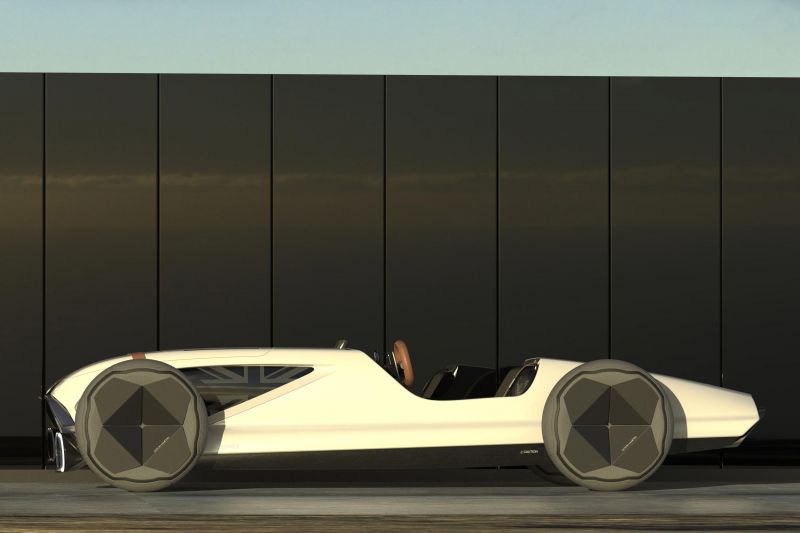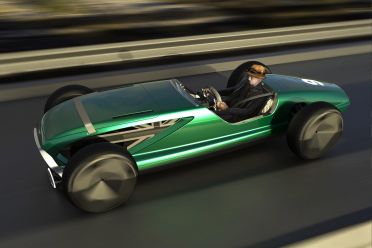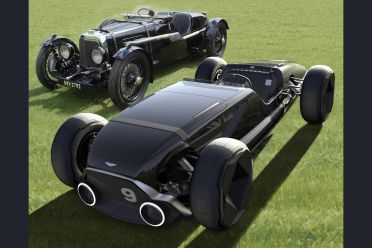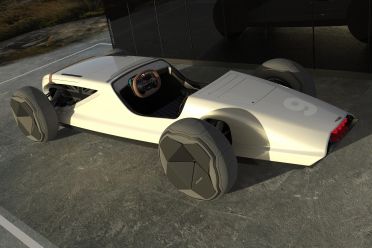Designer
Ricardo Campos, 28 years old, is an automotive designer from Aguascalientes, Mexico.
After graduating from the Istituto Europeo di Design, he started working as an exterior designer at Centro Stile FCA in Turin, Italy, mostly focused on Jeep models.
Project
During the quarantine, Ricardo took advantage of his free time in a creative way. Based on an old sketch, he envisioned a modern reinterpretation of the classic Aston Martin Le Mans (1932-1934) series.
As he describes it: “I wanted to adapt the modern Aston Martin language into a simple and elongated shape, while keeping it as a retro racer but with some futuristic touches.”
At the front, the round LED headlights are positioned very close to the ground. The grille has a similar shape with the ones on the Vantage (2017) and the V12 Speedster (2020).
It resembles the radiator grille on the sports cars of the ’30s with the whole body shaped around it, however it is fully covered for better aerodynamics due to the electric powertrain.
The long bonnet has a clean shape with a low nose bearing the Aston Martin emblem, and a retro-style horizontal leather strap holding down the hood which sits just a few centimetres above the wheels.
Overall, the silhouette of the LM9 has a teardrop shape, with an ultra-low stance. All of the lines start from the very short front overhang and fade away towards the dropping tail.
The lack of bumpers, doors, windscreen, fenders and exhaust pipes contribute to a minimalist look. The side inlets with the Union Jack flag graphics and the extended side sills following the curves of the front grille are the only decorative elements and do a great job in bringing even more lightness to the design.
At the same time, the exposed blacked-out wheels with geometric shapes on the rims and unique tyre tread design make the LM9 look quite futuristic.
At the back there is a long rear overhang with the rear deck sitting lower than the wheels. The thin curved body looks like a shell for the diffuser which takes up most of the rear space. Above it, the taillights consist of eight LED units appearing from the rear insert in a similar manner to the Vulcan (2015).
The interior of the LM9 is formed by a cutout on the body. The leather seat doesn’t look wide enough for two adults, prompting the driver to use it as a single-seater.
The dashboard has a minimal look with three analog gauges on the right side and a thin digital instrument cluster behind the futuristic steering wheel featuring integrated controls and gearshift paddles. As for the windshield, this thin glass panel is one of the shortest we have ever seen.
Verdict
The Aston Martin LM9 is merely a design study for purists, bringing old-school looks and driving experience to the modern era. Admittedly it wouldn’t make any sense as a production car, but it does serve its purpose as a nostalgic concept – and it surely is a great way to spend the quarantine.
In today’s world, cars like the Caterham Seven, Donkervoort D8 GTO, Ariel Atom, BAC Mono and KTM X-Bow are the closest thing to a street-legal open-top race car keeping the dream alive.
If Aston Martin was to enter this segment, we wouldn’t be surprised to see a modern Le Mans racer coming to life.
Having said that, pricing and availability would be off the grid considering Aston Martin’s premium strategy, resulting in a collector’s item.
If you liked the Aston Martin LM9, you can find more examples of Ricardo’s work in his Instagram profile page.
The Aston Martin LM9 Hommage was independently designed by Ricardo Campos for show purposes as a free-time project, and is not associated with Aston Martin Lagonda.

